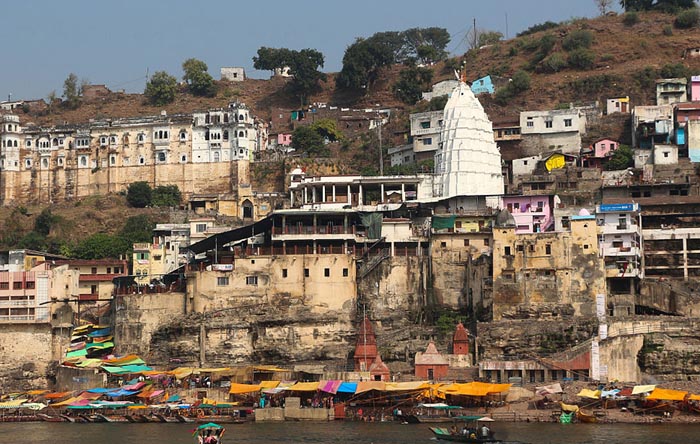Omkareshwar Temple

Information of Omkareshwar Temple, Khandwa, Madhya Pradesh
The Omkareshwar temple is one of the notable shrines of the Hindus that are located in Khandwa district of the Indian state of Madhya Pradesh. The temple is specifically positioned in Shivapuri region on the banks of the Narmada River. The temple is at a distance of around 12 miles from the centre of the city. The temple is specifically devoted for the Hindu devotees.
Omkareshwar Temple Religious significance
The temple has a rich history with regard to its religious importance and presence. Notably, the temple which is dedicated to lord Shiva is a meeting places many of the devotees of the lord throughout the year. The name of the temple i.e. Omkareshwar hold resemblance with the Lord of Omkaara while there is temple in the surrounding area named Amareshwar that has its association with the Immortal lord. It has also been noted that the temple is among the 12 revered Jyotirlinga shrines of the Hindu god i.e. Shiva which enhances its religious significance to the next level altogether. However, it is often been argued that Mamleshwar which is the Jyotirlinga of the temple is has been placed in an area across the Narmada river. As per the understanding gained from the Shiv Mahapuran, the temple has come into existence from a spat between Lord Shiva and Lord Brahma over their supremacy upon the earth. To prove his superiority, Lord Shiva, pieced the world into numerous endless pillars which further lead to the formation of Jyotirlinga. The temple i.e. Omkareshwar is one of the part of the Jyotirlinga.
Omkareshwar Temple Mythology & History
As said, Omkareshwar is one of the parts of the Jyotirlinga which is associated with Lord Shiva. Historical records and understanding gained from the Shiv Mahapuran suggests that Jyotirlinga is thousands of years old and its existence was recorded from the early civilization. Notably, once upon a time, Narada (Son of Lord Brahma) use to travel from one place to another pay visit to the Vindhya parvat. It is said that Narada conveyed Vindhya parvat about the magnificence of Mount Meru. This has made Vindhya parvat jealous and offended which has further encouraged it to become bigger that Meru. Contextually, Vindhya Parvat along with Lord Omkareshwar extensively worshiped Shiva linga for more than half a year. Impressed from the two, Lord Shiva granted their desired wish and segregated the Jyotirlinga into two parts which led to the formation of two temples i.e. Omkareshwar and Mamaleshwar. However, Lord Shiva seeks promise from Vindhya parvat for not causing problems to any of devotes of Lord Shiva. In the later scenario, Vindhya parvat did not keep its promise and obstructed the sun and moon with its growing magnitude. This has further influenced Lord Shiva to snatch away all the blessings from Vindhya parvat.
Omkareshwar Temple Architectural Importance
The temple has been built from stones and marbles. It covers quite a vast area and is often regarded as one of the biggest temple of India. The exteriors and interior of the temple has the touch of the art of the ancient civilization. The height of the temple assures that it could be seen from a long distance by the devotees. Soft stone has also been extensively used while developing the temple. There are finely carved wall paintings within the interior of the temple which further depicts the architectural masterpiece during the period. The surrounding area of the temple has both natural as well as architectural magnificence which further attracts devotees throughout the year.
- Andhra Pradesh Temples
- Assam Temples
- Bihar Temples
- New Delhi Temples
- Goa Temples
- Gujarat Temples
- Jammu and Kashmir Temples
- Karnataka Temples
- Kerala Temples
- Madhya Pradesh Temples
- Maharashtra Temples
- Odisha Temples
- Punjab Temples
- Rajasthan Temples
- Sikkim Temples
- Tamil Nadu Temples
- Telangana Temples
- Uttar Pradesh Temples
- Uttarakhand Temples
- West Bengal Temples